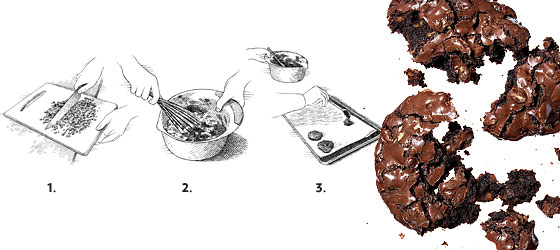I have been making roast chicken for over 45 years. It has a wonderful crisp skin and is simple to make. The basis for its spice rub is
schmaltz..rendered chicken fat with onions. The schmalz recipe is accessible via the link above and I've posted it separately.
I'm including information you may not see in all recipes, things like how to buy a good chicken. Please don't buy any old supermarket chicken. They are filled with antibiotics and grown in horrid conditions. Aside from how inhumane that is, chickens grown like that taste terrible. Buy an organic free range chicken. If you can buy it from the farmer who grew it that's best. If not buy it where they sell pasture raised, antibiotic free.
Clean the chicken. Wash in cool water. Dry thoroughly inside and out with an old clean kitchen towel. In order to proceed it cannot be slimy wet. One trick is to put it on a rack uncovered in the refrigerator for a few hours. It will lose any hint of water on its skin and be ready for seasoning. The picture below showin pin feathers remaining on the bird. These can be fluffed upward with the hand and then with a lit wooden match burnt off. Use a needle nose pliers or tweezer to remove the remaining quills you might find around the openings of the bird or on legs or wings.
Once you've cleaned it to your satisfaction check for excessive amounts of fat at the openings and grasping firmly pull away from the bird. Save the fat for making schmaltz. You can accumulate this fat in your freezer and then make the schmaltz and freeze it for when you need it.
This is the basic recipe for Nanny Pearl's spice rub :
One or two tablespoons schmaltz
one tablespoon or less kosher salt
a large garlic clove pressed thru a garlic press
paprika..maybe two or more teaspoons
fresh ground pepper..to taste
two teaspoons flour..or substitute flour for gluten-free results
mix all together with a tiny bit of warm water..1/2 teaspoon or so
When the chicken is dry as you can make it, rub it all over with the rub. I keep surgical gloves around for this but otherwize expect your hands to be a bit garlicy for a few hours.
Preheat oven to 350 degrees. Place the seasoned chicken on a rack, in a pan. If you don't have a roasting pan or a rack placing it into a pre-heated cast iron skillet will also do..breast side up
Cook roughly an hour and a half..testing
to test there are a few ways to test for doneness
press the drumsticks with fingers..are they soft and yielding? Wiggle drumsticks in joints..they should move fairly freely without much resistance. With a pairing knife make a slit where the drumstick meets the body and open and press enough to see if the juices look very bloody or red or clear..a little pink at the joint is desireable..lots of red is not. If you want to be really accurate, you can use a digital meat thermometer. My Son Max who is a butcher prefers his chicken breasts cooked to 145 degrees and the legs to 160.
Cooking Notes:
I prefer some pink left in the joints of the bird. See the photo at the beginning to see the color at the joint of the leg..you could let it cook just slightly more but if you do the breast will likely be dry.
These days I spatchcock and cook the bird in a cast iron skillet. Spatchcocking is removing the backbone and flattening the bird. It cooks faster that way and more evenly. To spatchcock the bird. Hold it on a board with its tail on the board and backbone facing you. With a sharp strong knife cut on either side of the backbone and carefully remove it. Turn the chicken breast side up onto the board and press down firmly on the breasts to flatten it. Then season and arrange backbone side down in a pan and continue to cook.
To Make Pan Gravy
Remove the chicken from the pan. Scrape as much of the crusty stuff off the rack and into the pan as you can. Remove most of the grease careful to leave the drippings.
While the pan is warm or room temperature add liquid maybe a cup or so. The liquid can be water, broth or wine/vermouth..white is best or white vermouth if no wine is available or any combination of the above. Using a whisk scratch up the bottom of the pan into the liquid. Gradually strain 2 Tablespoons of flour (I have used rice flour or gluten-free substitutes and it works fine) into the gravy, (use Cup4Cup by Tom Keller or other good gf flour, if you are gluten free). Bean based flour makes bean tasting gravy. A little at a time mix it into the liquid quickly so no lumps occur..then slowly heat to a boil until the desired consistency is reached. If there are resulting lumps you can always strain it out at the end. If you think you need more liquid just whisk it in as you go. I have at times enriched this gravy with boiled liver, neck meat and heart..chopped.
Cooking Notes:
I like to take the liver, heart, neck etc and cover in water adding a cut up carrot, small onion and piece of celery. Cook low heat, skim the scum. Strain and use this as your liquid in the gravy. You can still start it by adding a little wine.















